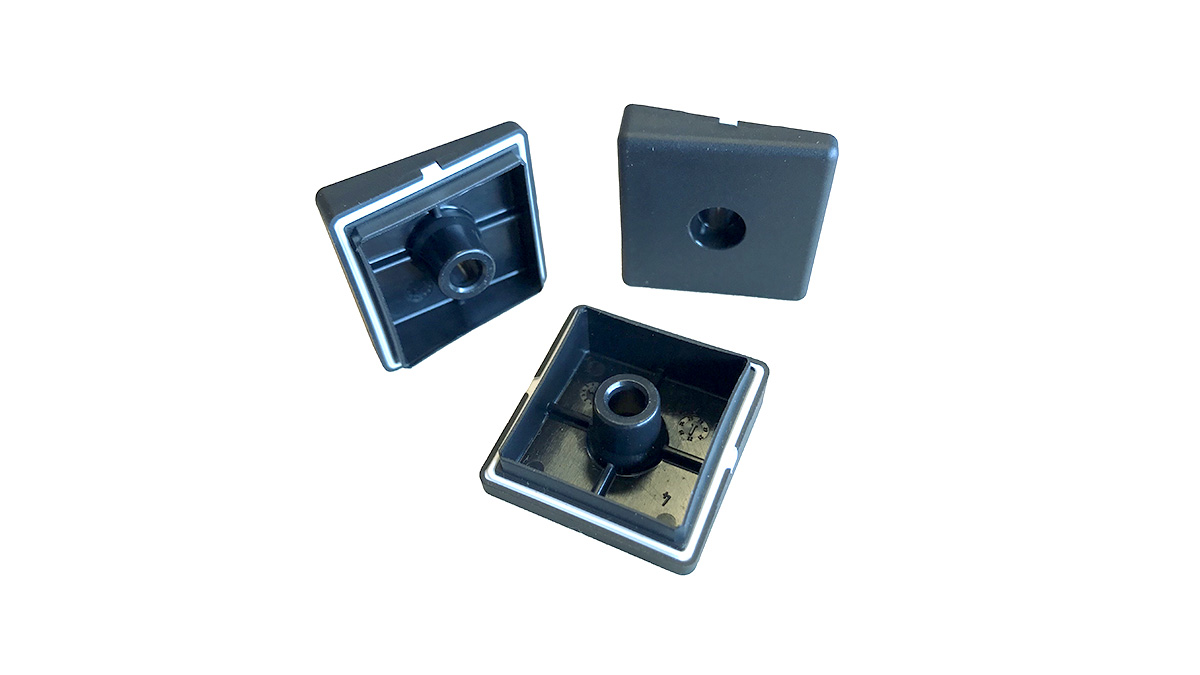
The electronics industry has seen remarkable growth over the last decade, introducing innovative technologies and solutions to the market at an impressive pace. This surge has sparked a significant increase in demand for precision parts for electronics, which play a crucial role in the functionality of modern electronic devices. Their importance lies not just in their compact size and complexity, but also in their unmatched precision and reliability.
With technical advancement come new challenges. We were approached by a Hungarian subsidiary of a German industrial connector manufacturer facing such a challenge. They tasked us with developing a two-component plastic part for one of their products. This injection-moulded component, produced through contract manufacturing, eliminates the need for assembly, offering considerable time and cost savings.
In this article, we delve into:
Tailored innovative solution for unique injection moulding challenges
Our client requested the removal of a component (seal) from the manufacturing process to eliminate the corresponding assembly step. If removal is not feasible, the development becomes unnecessary. Initially, the seal was manually inserted in the product, however, transitioning to a dual-component manufacturing approach yields significant cost savings.
For this solution, we employed advanced multi-component injection moulding technology. Our first step involved designing a two-component (2K) product, for which we designed a specialized injection mould. We produce the connector housing in both open and closed versions, with the open version requiring the 2K cover product. The finished components include:
- an open connector housing featuring an internally threaded cable entry, and
- a matching cover, made from the same material and equipped with a seal.
Two-component (2K) injection-molded products have been around for 30-40 years, yet we faced the challenge of ensuring that the seal remains securely in place within the cover. The issue stems from the lack of interaction between the two materials used: a hard polyamide for the cover and a soft, thermoplastic elastomer (TPE) for the seal. During the manufacturing process, these materials do not bond to each other, leading to the potential for the seal to easily slip out from the cover’s groove.
In addition to addressing this challenge, our goal was to manufacture a product without any burrs, ensuring that air could escape from the mould cavity without affecting the product’s functionality or aesthetic appearance on visible surfaces. These were the primary challenges faced in refining our tooling technology.
We developed the seal’s placement using core-back technique, mindful of delicacy and necessity for precise positioning of this thin, movable element to prevent the occurrence of burrs and material overruns.
Given the absence of adhesion between the two materials, ongoing fine-tuning of the seal’s groove was necessary. To secure the seal’s placement and ensure its retention within the groove, we employed intricate geometric designs, including undercuts and overflows, to achieve optimal results.
Manufacturing process of the two-component injection-moulded part
The core-back solution applied in the production of the 2K tool housing offers a sophisticated and efficient approach for creating products from two materials that poorly adhere or don’t adhere at all. Each material is melted in separate injection barrels and then introduced into a 4-cavity injection mould via screw plungers.
The manufacturing process consists of two consecutive phases, where a melted plastic component is injected into the mould cavities in each phase. Initially, a larger quantity of the hard component (the cover) is injected. This is followed by the core-back stage, which retracts to create space for the second, significantly smaller quantity of the soft component to be injected.
After the cooling period, the mould opens, and the finished parts are removed from the mould with the assistance of an ejector system and a robot. It’s crucial during the manufacturing process to ensure that the sensitive pieces do not fall, for which a linear robot plays a vital role. It securely grasps the products and places them on a conveyor belt, ensuring the manufacturing process’s smooth operation and preserving the products in perfect condition.
Meeting special technical requirements with the 2k part
Our product, an industrial electrical connector, must adhere to extremely stringent standards. A fundamental expectation post-assembly of the housing and cover is complete water and dust resistance. Furthermore, our client mandates that product delivery occurs with a 0 ppm (parts per million) defect rate, signifying that not a single defective item is permissible among every million produced. Such a high-quality standard motivates us to achieve production with the minimal possible errors and waste.
Precision electronic components injection moulding at Mikropakk
To meet the elevated technological demands of the electronics industry, we utilize highly precise tools and manufacturing equipment. We proudly possess both the necessary machinery and the professional know-how to fulfill these high standards. If you have unique requirements in this area or encounter a specific challenge, please reach out to us with confidence. Our expert team is ready to provide a customized solution to meet your specific needs.
